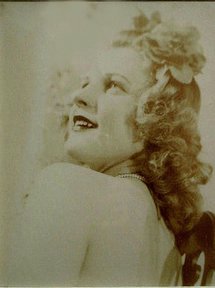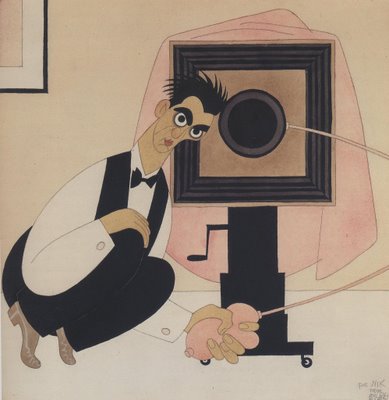
Last year I described the life of Ivor Hele, the great Australian war illustrator. Hele painted front line combat in Africa, the Middle East, Korea and the South Pacific during World War II and the Korean War. In the jungles of New Guinea he was injured and lay unconscious for two days.

After a career filled with death and carnage, Hele withdrew from the world. He and his wife lived a life of isolation in a remote cottage by the ocean. Hele rarely spoke about what he had witnessed. He avoided the public and refused to have his picture taken. The local newspaper noted upon his death that "very few people have ever been inside their home." One young niece who visited the cottage recalled "Ivor really detested children."
But Hele never stopped drawing. Instead of drawing armies clashing on a battlefield, he began drawing intimate pictures of his wife around the house. He drew her putting on her stockings, he drew her sewing, he drew her wearing a funny hat made from a folded newspaper, he drew her reading a book. Mostly he seemed to like drawing her with her skirts raised and-- bless her-- she indulged him.
The local newspaper noted that "it was not until after his death... that it was realized he had kept so many sketches." The following drawings are from that collection. They have never been published, but deserve an audience:
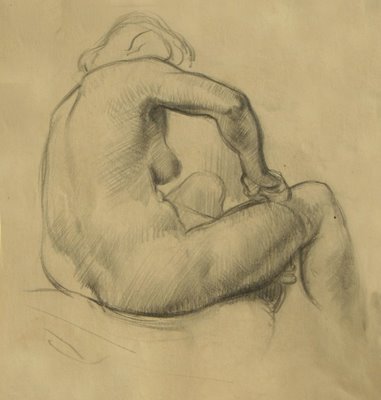

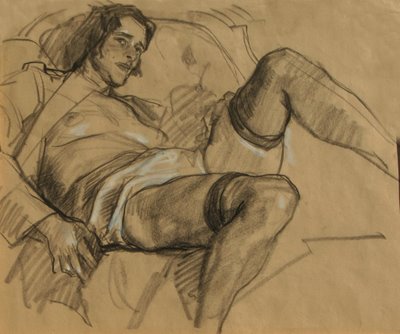

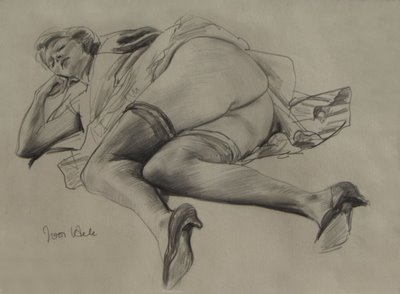
Drawing his wife in the safety and seclusion of their little cottage seemed to be therapeutic for Hele's scorched soul.
These are marvelous figure studies but they are more. By lingering over the design of the human form, the symmetry and harmony of the limbs, the tenderness of human flesh, Hele may have been able to restore a little of nature's balance to his own life.




















